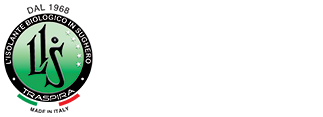With 50% of the world’s cultivation of Quercus Suber, Portugal is the first manufacturer in the cork world, whose most common use is in the building industry in the form of self-foam insulation board and self-glued, commonly called “toasted . “or” brown “
The Forests of Portuguese Oaks
The cork oak is native to the western Mediterranean basin, it finds the ideal conditions for its growth. The cork forests of Portugal, protected by royal edicts since the Middle Ages, were the subject of planting planned and currently cover 8% of Portuguese and produce 49.6% of the world cork territory, compared to 3% of our Sardinia.
The oak, a very special ecosystem
Unique and delicate, the cork oak is one of the 35 richest ecosystems and their importance for biodiversity in the world. Home to over 160 species of birds, 24 species of reptiles and amphibians and 37 species of mammals, some endangered. For every 1,000 square meters of land, there are about 135 different species of plants.
The cork oak is a first-rate value for the ecosystem and the environment:
prevents soil degradation,
It makes the most productive soils,
regulates the hydrological cycle,
fights desertification,
is a barrier to the spread of fire,
captures and stores CO2,
It ensures biodiversity,
combats climate change.
Portugal, a green lung for the whole of Europe
Forests are the great allies in the fight against global warming. You learn from elementary schools, through photosynthesis, trees absorb carbon dioxide and convert it into organic tissue, sequestering carbon.
As a very long-lived tree, the oak favors like no other the carbon storage in the course of the ten years of his life.
Considering the total area of ??oak forests, oak forests of the western basin of the Mediterranean have a CO2 retention capacity of about 30 million tons, equivalent to about 15 tons / hectare. (Source: National Institute of Agronomy in Portugal, 2014). The only Portugal is responsible for the retention of about 10 million tonnes of CO2
The oak structure
The trunk of the oak consists of the wooden frame, which results to be a good fuel for coal and wood and the bark, a fabric consisting of micro cells to which is given the name of cork.
It is immediately evident the protective nature of the cork compared to wood, cork bark, robust, resistant to heat, cold, harsh weather conditions and fire, protecting the wooden frame, much more delicate.
The fruit of the oak is the acorn, the prized food Porco Preto Alentejano, a breed indigenous pigs, which live in freedom and from which we get the famous Parma ham.
The plant life cycle: growth and decortica
The decortica is the operation by which the courts is removed from the oak. The period for the decortica runs from May to August because, because of the heat, the wooden frame holds more of him the water, making it easier removal of the bark.
The first harvest takes place when the oak tree is 25 years of age and the trunk has a diameter of 70 cm measured at 1.3 meters from the ground. Subsequent decortiche occur at an interval of at least nine years and are repeated for about 15-18 times.
The cork extracted with the first two decortiche is not suitable for the production of caps, but has features that make it ideal for the construction of floors, walls and insulation, such as self-foam insulation panels and self-glued.
instead as from the 3rd decortica that you get the most valuable cork, ideal for the production of quality corks.
After the decortica, on every oak it is marked the last digit of the year in which it was made the cork extraction.
With the decortica begins the life cycle of cork as a raw material, which leads him to also be used to protect our homes, such as natural thermo-acoustic insulation.
Source: www.architetturaecosostenibile.it



